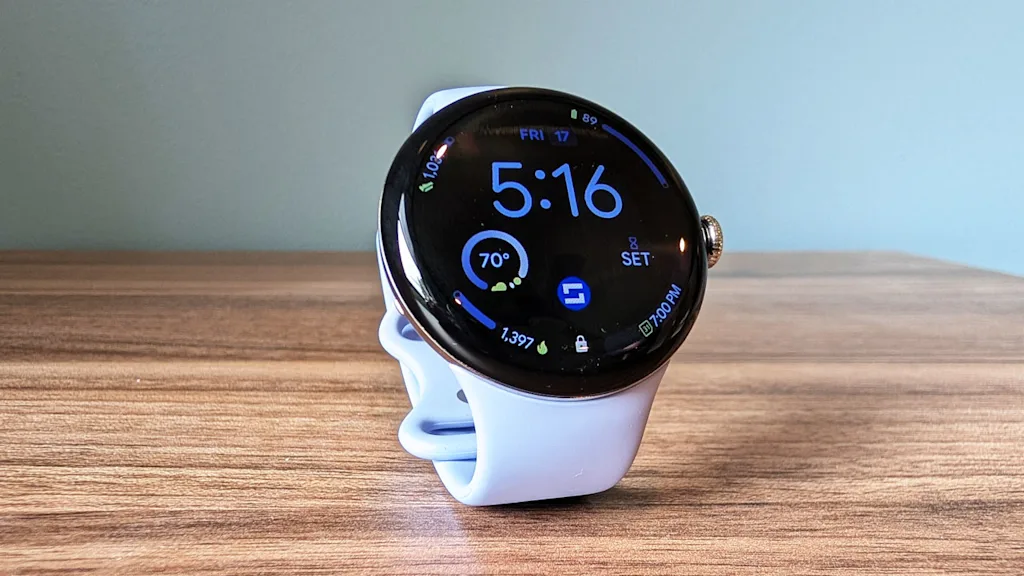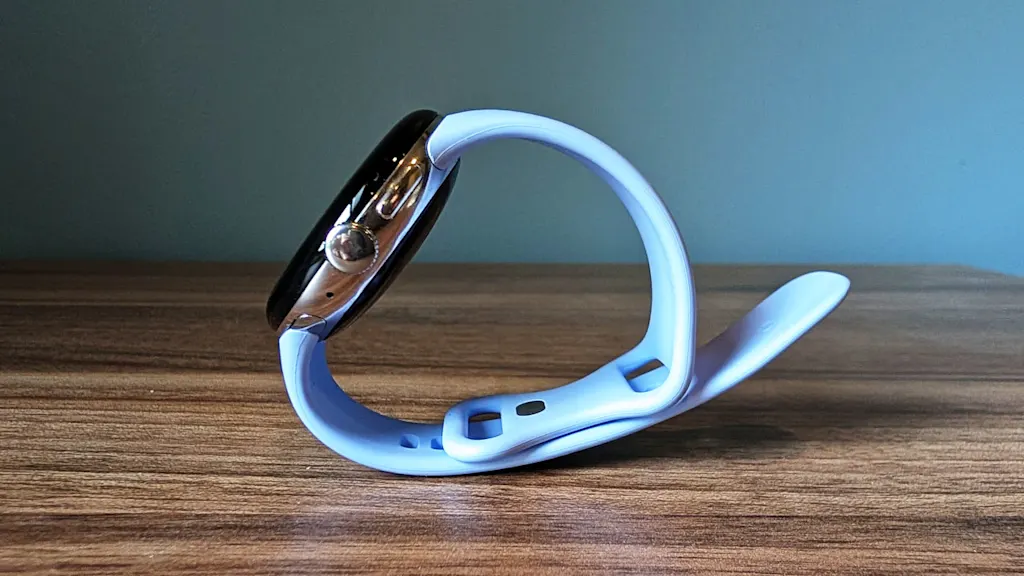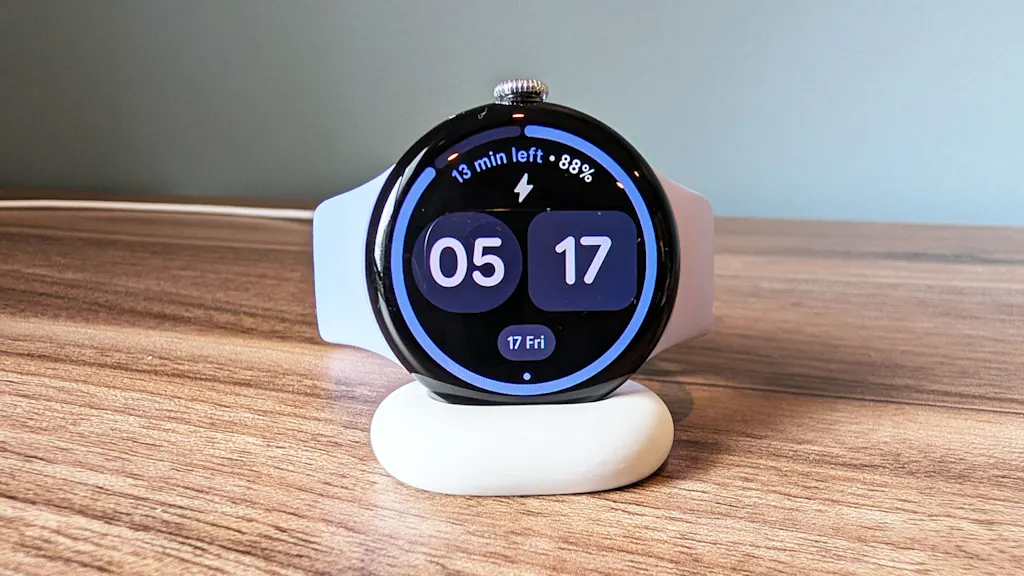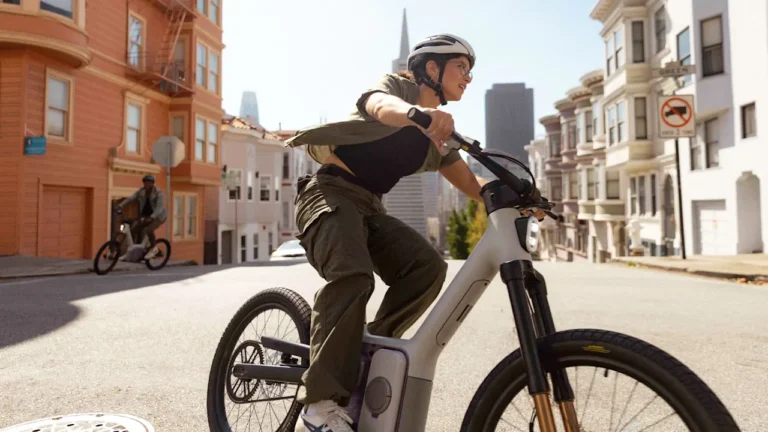The best thing I can say about Google’s Pixel Watch 4 is that I don’t think about it all that much.
Whenever I wear my Apple Watch, it’s kind of a nuisance. Stand up. Breathe. How are you feeling right now? Looks like you’re on a walk. Was that an exercise you just started? Even just regular notifications for emails and text messages can get overwhelming.
The Pixel Watch 4 is unintrusive by comparison. While it’s full of fitness tracking features and can put notifications on your wrist, it doesn’t ask for much of your attention in return. In a way, that’s pretty refreshing.
Fitness optional
My big disclaimer with this review is that I’m not big into quantified health. Filling an activity ring never clicked for me as extrinsic motivation (I blame decades of video games for numbing me to such things), and I don’t need a fitness band to remember whether I went for a swim or walked more than usual.
So while the Apple Watch has leaned ever further into fitness features, I’ve felt increasingly alienated from it. Yes, you can turn off the various notifications to get out of your chair, consider some exercise, or focus on mindfulness, but figuring out how to do that is a hassle. It also comes with a pang of guilt: Am I neglecting my health by telling my watch to shut up?

The Pixel Watch 4’s fitness features aren’t as aggressive. While it performs all the requisite activity tracking—counting steps, checking heart rate, measuring sleep—and can log an array of specific exercises, it never interrupts you to start doing those things. There’s a “Reminders to Move” setting deep within Google’s Fitbit app, but it’s off by default. Google won’t even bother you to start logging an exercise in progress, and will instead wait until afterward to ask whether you want to confirm it or look at a recap.
The Pixel Watch 4’s biggest out-of-the-box nag involves stress levels. The watch uses a continuous electrodermal activity sensor to understand when there’s sweat on your skin, and combines that with changes in heart rate and skin temperature to pick up on potential stress events. You then get a notification encouraging you to reflect and optionally log how you’re feeling.

I’m not entirely bothered by this, because the point is to be mindful of something that’s actually happening. It’d be nice if these reminders arrived sooner, though. Too often I get pinged about some anxiety from 10 or 15 minutes earlier and can no longer remember what triggered it.
Google still hasn’t shipped the Personal AI Coach that demoed a couple of months ago, so we’ll see if that feature introduces more nuisances. For now, I’m thankful for a watch with fitness features that arise only when you actually want them.
Charging is easy and fast
Charging is another common annoyance for smartwatches, especially as they push into sleep tracking and discourage overnight charging. Google has solved this problem by making the charging mechanism on the Pixel Watch 4 faster and more convenient.

In my testing, a complete charge from dead to 100% took 42 minutes, but it needed only about 15 minutes to get from 25% to 80%. If you use the watch for sleep tracking, you can recharge while getting ready in the morning and still have enough power to get through the day. You’ll also get a helpful notification when the watch is fully charged, though I wish you could tweak the threshold to get an alert at, say, 80%, in case your morning routine doesn’t allow enough time for a full charge.
Google also redesigned the Pixel Watch 4 charger so that the watch sits upright in a little groove, with the screen facing out and the crown facing up. If the charger’s on your desk or nightstand, this allows the watch to face outward so you can tap the screen to glance at the time. It also allows the charger to rest flat on a table even with a continuous, loop-style watchband. It’s just a smarter design that Apple and every other smartwatch maker ought to copy.
Fewer nagging notifications
The Pixel Watch 4 has a smart way of handling notifications as well, particularly around sleep.
Like most smartwatches, the Pixel Watch 4 lets you set up a sleep schedule that’s synced to your phone, so your wrist doesn’t buzz during bedtime, but it can also use sleep detection to toggle “Bedtime” mode automatically. This can prevent you from being jolted awake by late-night notifications if you fall asleep early, and can resume notifications if you’re awake earlier than usual.
This can backfire if, like me, you sometimes wake up too early and struggle to fall back to sleep, as the watch might disable Bedtime mode during those times of restlessness. Fortunately, you can disable turning Bedtime mode off automatically in the morning and still have it turn on by itself at night (or vice versa).
What’s still annoying
Most of my Pixel Watch 4 usage is passive. I’ll glance at the time, look at a notification, or get a sense of how I slept, but otherwise will leave the watch mostly alone. Some small annoyances arise, though, when I’m actively trying to use it.
For one thing, Google’s Wear OS platform needs better app support. While watch apps tend to be less useful than just taking out your phone, I’ve missed having an MLB app to check scores, along with the “Live Activities” that appear on the Apple Watch for things like fantasy football scores or Uber ride status. (The latter aren’t full-blown apps, but are mirrors of the same feature on the iPhone.)
I’ve also struggled with the raise-to-talk feature for Gemini, which is one of the Pixel Watch 4’s hallmark features. While this ought to be the best way to have quick exchanges with Google’s AI, the response to raising your wrist just doesn’t feel snappy enough. Too often it failed to respond at all.
Out of the way
The Pixel Watch 4 doesn’t fundamentally change what smartwatches can do. It’s obviously nicer than its predecessors, with a higher screen-to-body ratio and brighter display. I appreciate that it’s a genuine breakthrough in smartwatch repairability. But it’s not a huge leap from earlier Pixel Watches or a major departure from what competitors offer.
Instead, the Pixel Watch 4 takes the existing smartwatch formula and makes it a little less intrusive. Rather than being another device I have to constantly babysit, it’s mostly just a watch. That’s alright with me.

